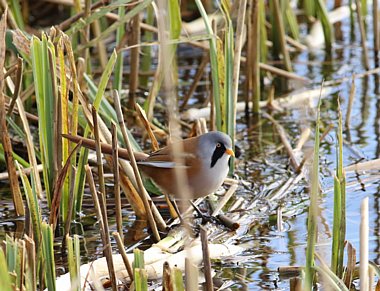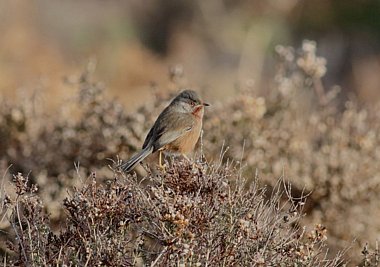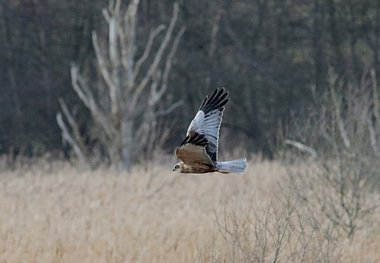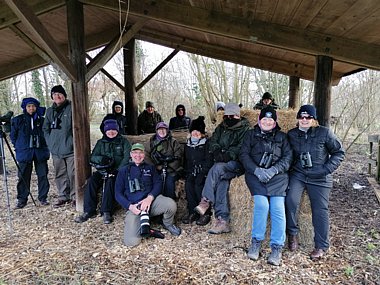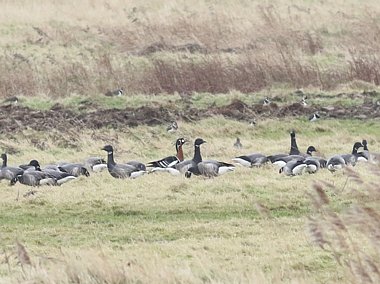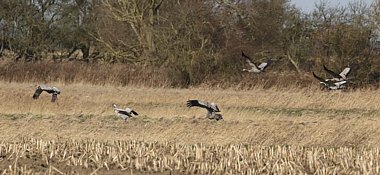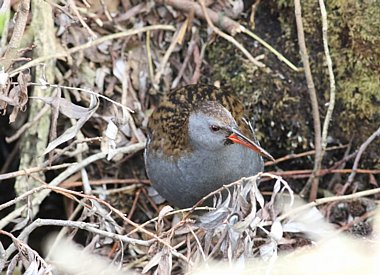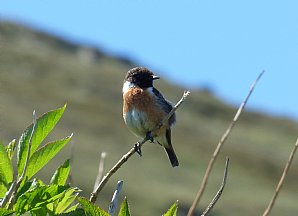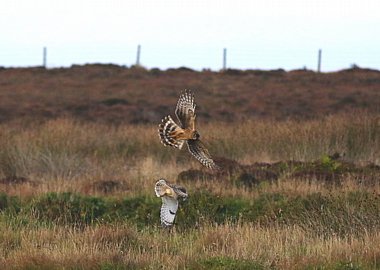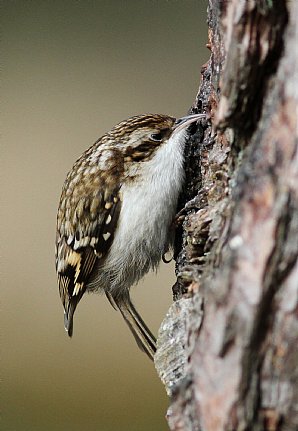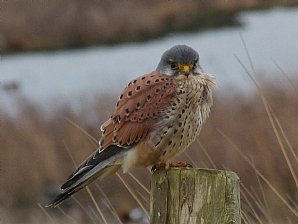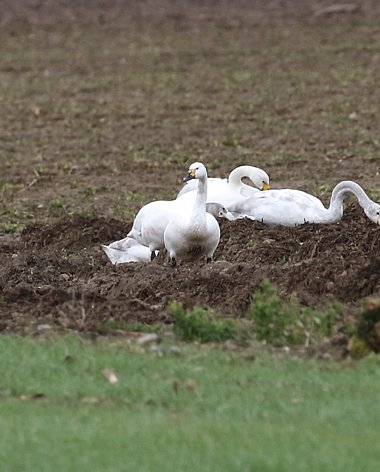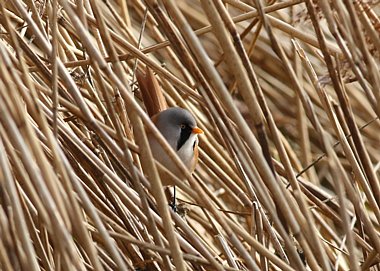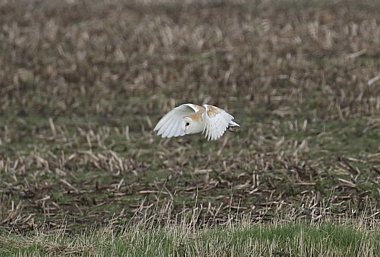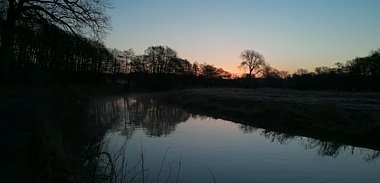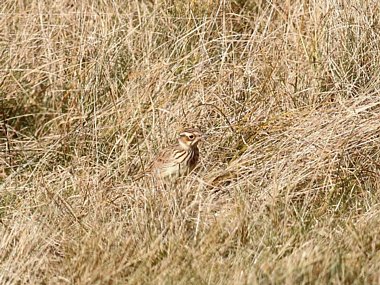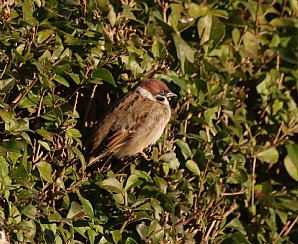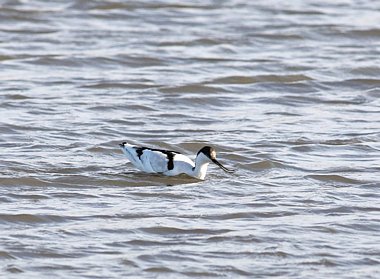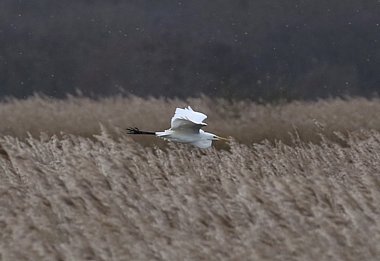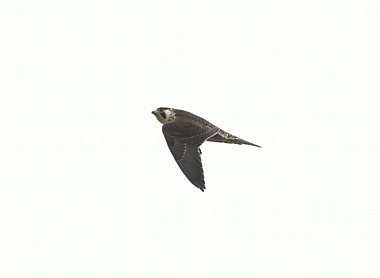Norfolk and Suffolk in Winter
Birding some of the best wetlands in Britain!
| Destination | |
|---|---|
| Focus | |
| Max Group Size | 7 per guide |
An exciting holiday to some of the UK’s premier winter birding destinations. East Anglia offers a wide variety and unrivalled birding potential at this time of year with a high species list and superb wildlife encounters are likely. We’ll spread our time between established reserves and also visit many superb lesser known sites, well away from the beaten track.
Norfolk and Suffolk are both home to some of the best wetlands in the UK. Bittern will be a top target, but we’ll also hope to see Common Crane in the fields, and as they come to roost in the Broads. Wildfowl will feature highly with Whooper and Bewick's Swan and vast numbers of wintering geese. By day we’ll search through Pink-footed and Dark-bellied Brent Geese for scarcer species including Taiga and Tundra Bean, both races of White-fronted, Barnacle and Black Brant, while mass dusk flights will be a true spectacle. Offshore a variety of sea-duck, divers, grebes and auks make for excellent sea-watching, while in rougher conditions storm driven species might include Little Auk, skuas (Great and Pomarine) or perhaps Grey Phalarope.
Internationally important wader numbers feed on the tidal estuaries, with Knot and Dunlin dominating though Avocet, Golden and Grey Plover, Spotted Redshank and Purple Sandpiper are likely. Beaches and saltmarsh hold Twite, Snow Bunting, Water Pipit and Shore Lark, while Bearded Tit and Cetti’s Warbler can be found at several sites. Any wintering rarities will be on our radar too and in recent years these have included Eastern Yellow Wagtail, Great Grey Shrike, Parrot Crossbill, Hume’s and Pallas Warbler and Arctic Redpoll.
Farmland, heaths and ‘the Brecks’ offer a fantastic change of scenery with a range of declining species available and there’s also the chance of Brambling, Woodlark, Hawfinch and Common Crossbill. This is a trip with something for everyone as we check local gulls for rarer species, and raptors will feature strongly. Hen and Marsh Harrier, Rough-legged Buzzard, Peregrine, Merlin and Goshawk are all possible along with five Owl species if really lucky! A fantastic winter holiday!
Day 1: Saturday - Meet and birding on the Suffolk Coast
We meet in Norwich at 1pm, travelling 45 minutes to Suffolk, where our birding begins. Here any number of vast, rich wetlands are broken up by heathland on one side and the sea on the other. Birds are everywhere, and we may begin with a look offshore where Red-throated Diver and Great Crested Grebe will be particularly numerous as well as seaduck including Common and Velvet Scoter, Eider, Red-breasted Merganser and Long-tailed Duck. Any patch of mud or beach can support large wader flocks with Knot and Dunlin both common, and we may see our first Avocets or if lucky a Bittern in flight to finish the day.
Day 2: Sunday - Minsmere
Minsmere RSPB is without doubt one of Britain’s most famous bird reserves. Internationally recognised and instrumental in the successful colonisation of scarce breeding species such as Bittern, Marsh Harrier and Avocet, Minsmere also provides extensive habitat for Water Rail, Bearded Tit and Cetti’s Warbler to spread their range. We hope to see all these during our visit with several well managed scrapes and lagoons overlooked by good quality hides. A variety of wildfowl and waders will be present and if water levels are favourable Black-tailed Godwit, Ruff and Spotted Redshank can occur on the scrapes, or perhaps Smew and Greater Scaup on pools. For gull enthusiasts there’s the prospect of trying to pick out Yellow-legged, Caspian, Iceland, Glaucous and Little Gull in the roosts and Mediterranean Gull are fairly common. Snow Bunting and Twite frequent the beach, with Stonechat and Linnet in the dunes and Kingfisher and Otter are seen daily at the large Island Mere lagoon.
Later in the day we have a range of options, heading north to nearby Dunwich Heath where Dartford Warbler is a possibility in mild winters or perhaps to Walberswick or Benacre Marshes. Alternatively, just to the south lies Sizewell which is often home to a wintering Black Redstart and a high tide roost of Purple Sandpiper, while Boyton Marshes, Orford Ness and Thorpeness are all good birding locations in their own right.
Day 3: Monday - The Brecks
In a change of scenery we head inland to investigate different habitats including dry heath and woodland. On the border with Norfolk, we spend the day in the Brecks where in the woods we listen out for Common Crossbill and mixed finch flocks containing Siskin, Lesser Redpoll and Brambling. On the forest edges Woodlark will be starting to sing and it’s a good time of year for displaying Goshawk. A visit to the famous Lynford Arboretum will hopefully give us views of Hawfinch, but we need luck on our side as the birds can be elusive and tricky to find. We could encounter Tawny Owl, Nuthatch, Treecreeper, Marsh Tit, Firecrest, Great Spotted or even (very rare) Lesser Spotted Woodpecker. Occasional Great Grey Shrike take up winter territory and in Parrot Crossbill irruption years we may have another rarity to target. Nearby Lakenheath RSPB also offers good birding in poorer weather, hopeful conditions are favourable though so we can concentrate on finding the aforementioned species.
Day 4: Tuesday - Coastal birding
Today we have a few options, with great birding at coastal locations to the north or south. If tides are favourable, Breydon Water may be chosen, and with several good view points of the estuary we hope to see large numbers of roosting waders while in some years, Water Pipit can be abundant in the saltmarsh too. Other sites including Winterton, Horsey Gap, Mundesley or Sheringham may feature if we decide to follow the Norfolk coastline north, while going south we have multiple options or could even take a second look at favourites such as Minsmere. Today might be a good time to chase a rarity or two, calling into towns and villages recently frequented by Waxwings or perhaps test our identification skills at a known Redpoll flock in the hope of picking up a Mealy or Arctic! By afternoon we plan to head inland to the Broads, where we hope to get lucky at a communal raptor roost. Large numbers of Marsh Harrier gathering for the night will be the most conspicuous species, with Hen Harrier, Merlin, Barn and Short-eared Owl also possible. Common Crane may also be seen as they head to their roosting places, and we have the added benefit of staying nearby to select the best weather to maximise our chances with this species.
Day 5: Wednesday - The Norfolk Broads
After the previous evening's taster, we set aside a full day for exploring the Norfolk Broads with a range of great wetland sites available to us. Taiga Bean Goose will be one of the top targets, this area supporting one of only two regular wintering British flocks. Among the flocks of swans and Pink-footed Geese come chances of ‘tag-along’ species such as Bewick’s Swan, White-fronted or Barnacle Goose and we look for Common Crane again, this time as they feed in the fields. The expansive reedbeds here offer further chances to see Bittern, Great and Cattle Egret, Water Rail, Bearded Tit and Cetti’s Warbler plus Otters, which frequent the Broads too. There will also be plenty of wildfowl to scour through, Lapwing, Golden Plover and other waders in the fields and of course hunting raptors to keep us entertained. A great day out.
Day 6: Thursday - North Norfolk Coast
The remainder of our time will be spent birding the excellent North Norfolk coast. The Cley area may be chosen, though we stay flexible so as to respond to any immediate bird news. A series of scrapes and pools here and at nearby Blakeney fresh-marsh should hold wildfowl and wader species while the area is renowned for rarities year-round. Offshore sea-watching can be as good as anywhere on the East Anglian coast, and on the beaches Ringed and Grey Plover can be found roosting as Sanderling sprint above the tideline. We search these areas and the adjacent saltmarsh for pipits, Twite, Shore Lark, Snow and Lapland Bunting. Little Egret are now commonplace and with increasing numbers of Great White and Cattle Egret being seen and Spoonbill breeding nearby, so any white birds might not be swans! Other local sites such as Stiffkey Marshes, Salthouse or Kelling Water Meadows may also be visited on this day.
Day 7: Friday - North Norfolk Coast including Titchwell
Today our time will be spread between coastal sites and visits to local farmland. Forays a few hundred yards inland will hopefully give us Little Owl, Grey Partridge, Skylark, Tree Sparrow, Yellowhammer and maybe Corn Bunting - all welcome additions to our checklist. At Titchwell RSPB, it is worth walking to scan the sea where Red-necked and Slavonian Grebe or scarcer divers might be found. The surrounding area is particularly good for geese, field after field can be full to bursting point with Pink-footed while on the adjacent saltmarsh Dark-bellied Brent Goose are numerous too. We spend time today searching through the flocks where possibilities include Tundra Bean, European or Greenland White-fronted, Snow, Ross’s, Barnacle, North American Black Brant and Pale-bellied Brent, Red-breasted or even a true, small race Canada! Who knows what we may find!? On the lookout for raptors too, allocating time to search for Rough-legged Buzzard if one is wintering. Marsh and Hen Harrier may appear as the day comes to an end and we plan to finish with the truly spectacular dusk flight of thousands upon thousands of calling geese as they head to roost! A perfect ending to our East Anglian tour.
Day 8: Saturday - Final birding and departure
A final chance for birding, mopping up any species we might not yet have seen, or possibly visiting a new site such as Snettisham or Holme. Depending on train and departure times we’ll drive back to Norwich at roughly 12pm where the holiday ends.
Please note: all itineraries are given as a guide only. Actual holiday content may vary according to the judgement of your guide, and elements beyond our control (eg weather).
Expect a wide variation in weather conditions. East Anglia can at times be wet and windy, however we may also experience some nice dry weather. Sunshine, rain and strong winds are all possible, and you will probably experience a bit of everything. Please bring walking boots or shoes, weatherproof clothing and a small rucksack.
We take things at a slow pace, though will cover a few miles of walking daily mainly on good quality paths but at times over rougher or uneven ground, through fields or across sandy beaches. Rare and target birds are often found in inconvenient locations, involving several gates and stiles to be climbed or potentially a long walk in exposed locations. Transfer between sites is by mini-bus but a reasonable level of fitness is recommended and a walking pole may prove useful.
If you wish to join this holiday by car, parking is available at Norwich Train Station. Further details can be found here
What's included in your 'Norfolk and Suffolk in Winter' holiday price:
• Seven nights comfortable en-suite hotel accommodation. Guests are never expected to share. All rooms are en-suite. Full details with your joining pack.
• Full breakfast and dinner from Saturday evening until Saturday morning, packed lunch daily.
• Guidance from a professional Group Leader.
What's not included in your 'Norfolk and Suffolk in Winter' holiday price
• Travel to Norwich British Rail, or any other agreed meeting point.
• Insurance, drinks and other items of a personal nature.
Other birding and wildlife holidays in Southern England
- Isles of Scilly for birders
- Cornwall in Spring
- Forest of Dean and Somerset Levels
- Isles of Scilly in Spring
- NEW! Winter Birdlife of Devon & Dorset
- West Cornwall in Autumn for birders
Why choose Heatherlea for your birding and wildlife holiday?
Heatherlea is one of Britain's leading wildlife holiday operators. In 2019 we celebrate our 29th Anniversary with more choice than ever, both in Scotland and overseas. Relax and enjoy yourself, as we do all the planning! Above all, we make it our business to show key wildlife to you. Our fully inclusive guided holidays concentrate on the real experience, and we take time to ensure that each of our guests enjoys everything we do.
- We have been organising birding and wildlife holidays for 30 seasons, and have a highly experienced and capable office team. We also offer a telephone and email service outside normal office hours.
- We are a small company, run BY birders FOR birders. Come and see!
- Heatherlea are Mainland Scotland’s FIRST ‘5-Star Wildlife Experience!’ This is the highest available grading, classified as ‘exceptional’ by visitScotland.
- Heatherlea hold full Tour Operator Insurance for your added protection.
- Heatherlea is a limited company, registered in Scotland. We are also registered to pay VAT, which is included in your holiday price as quoted on this page.
- Once your holiday is confirmed in writing by us, we promise not to surcharge the price for any reason.

